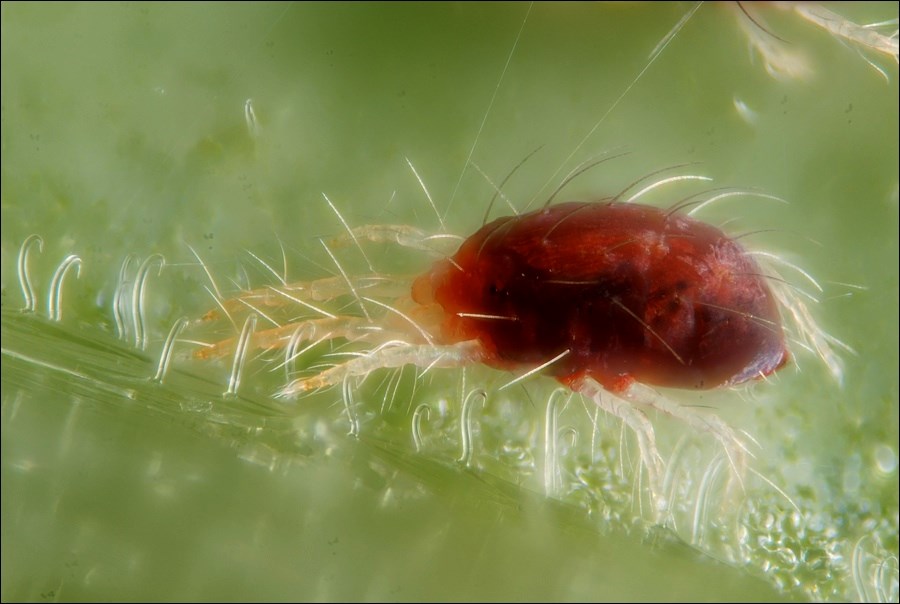These are two of the most common houseplant pests, one mostly a nuisance and the other deadly. Often pests are brought into the house with plants that spent the summer outdoors, or on newly purchased or gifted plants.
Do you see little flies zigzagging in front of your face? These are not fruit flies, as many think. These are fungus gnats, tiny, weak, erratic flyers. The flies are the adult stage of this pest, and do no damage other than annoying you and laying eggs on the surface of the soil of your houseplants.
The eggs hatch into larvae (maggots), which have a shiny black head and an elongated, whitish to transparent body, although they are in the soil and you are not likely to see them. They love damp, rich soils and feed on root hairs and other organic materials. The most heavily infested plants are likely to be overwatered. Plants can suffer damage if it is a heavy infestation, but for the most part you are only aware of the flies.
Spraying infected plants with an insecticide is useless, because the pest multiplies in the soil. Fungus gnats can be controlled by capturing the egg-laying adults on yellow sticky traps laid horizontally on the soil surface.
Allowing the soil to dry to a depth of two inches between watering discourages egg laying and inhibits the development of eggs. These are control measures, but will not totally eliminate the pest.
To get rid of them you need to treat the soil of all houseplants with a product containing Bacillus thuringiensis var. israelensis. I have not found any such product locally. Control measures limit the pest, including discarding heavily infested plants.
Spider mites are another matter. These are tiny, eight legged sap-sucking pests found on the underside of leaves. Often they are first noticed when the leaves of a plant are drying up and falling off. At this point you are likely to notice tiny cobwebs where the leaves join the stem. This plant is likely beyond rescue and is best discarded.
Carefully check all other plants for the pest, because it can spread rapidly. Look for tiny yellow spots on the leaves. Hold a piece of white paper under the plant and gently shake a few leaves. Examine the paper with a magnifier to spot the mites. Some plants are particularly susceptible, such as hibiscus and miniature roses.
Prevention is easier than getting rid of this pest. Misting plants regularly to provide higher humidity, and washing or wiping plants regularly helps to keep your plants healthy. Checking your plants each time you water will allow you to catch a problem before it gets severe. To treat spider mites You can use insecticidal soap, readily available. Repeat treatment, six or seven days apart, is required. A couple of products available kill all stages of the mites. For larger leaved plants wiping leaves and stems with isopropyl rubbing alcohol kills the mites.
There are other houseplant pests, most of which are treated the same way as spider mites. Regularly checking your plants to catch problems early is the best defence.
Horticulturalist Mary Wright has lived in Denare Beach for over 20 years. She shares her passion for gardening with Flin Flon readers in The Reminder.




